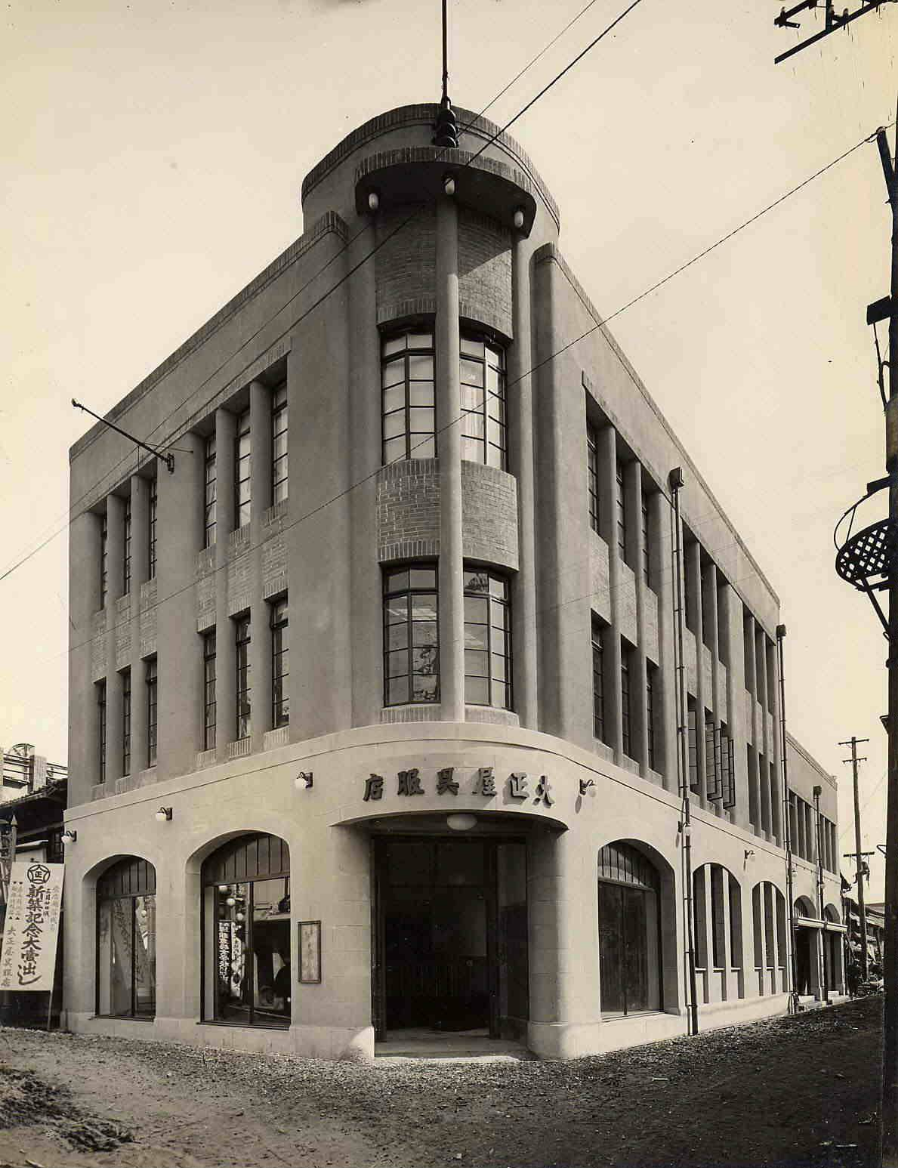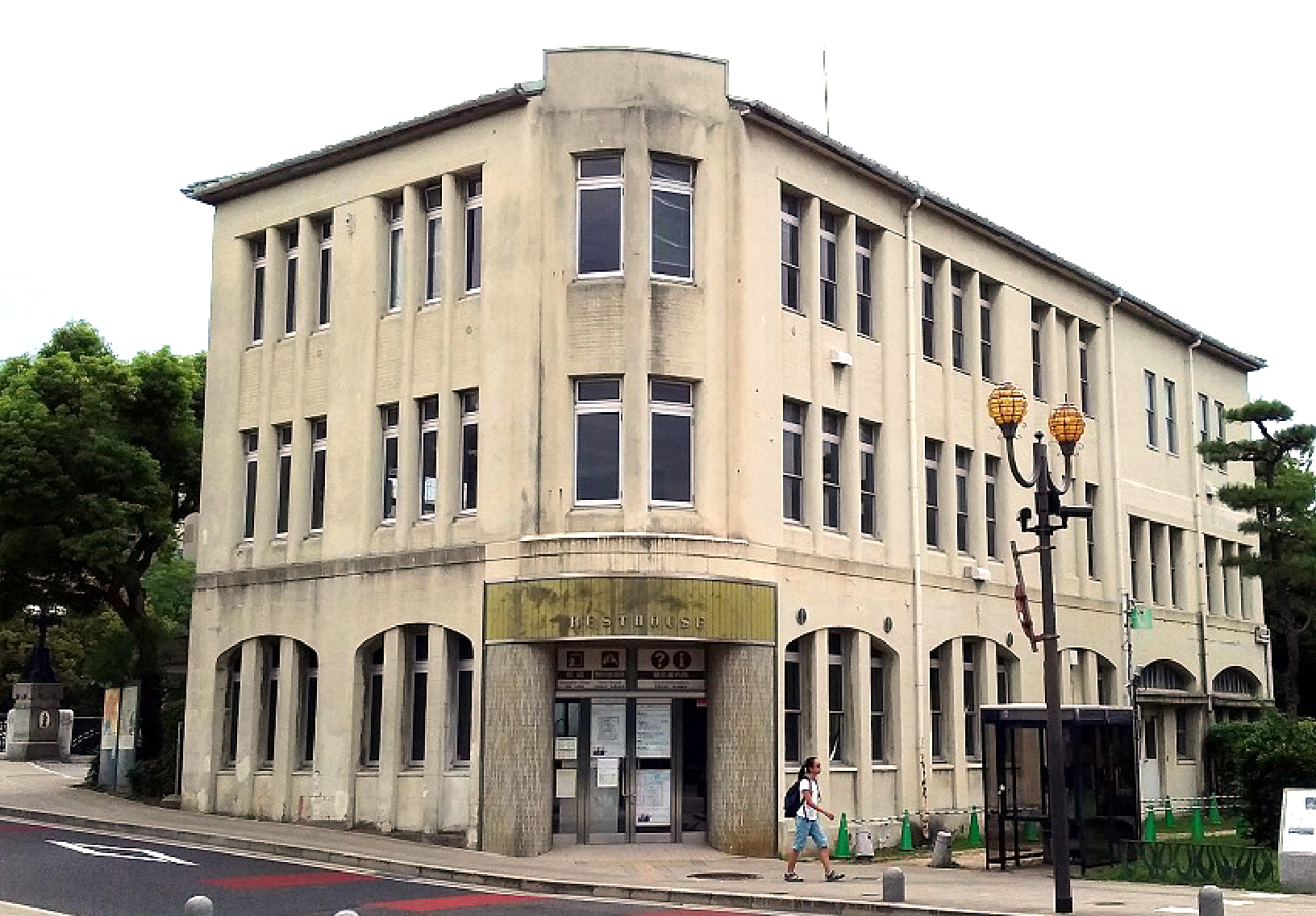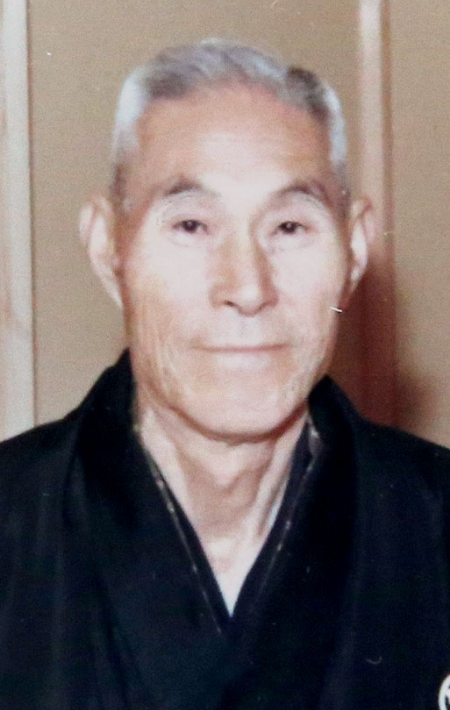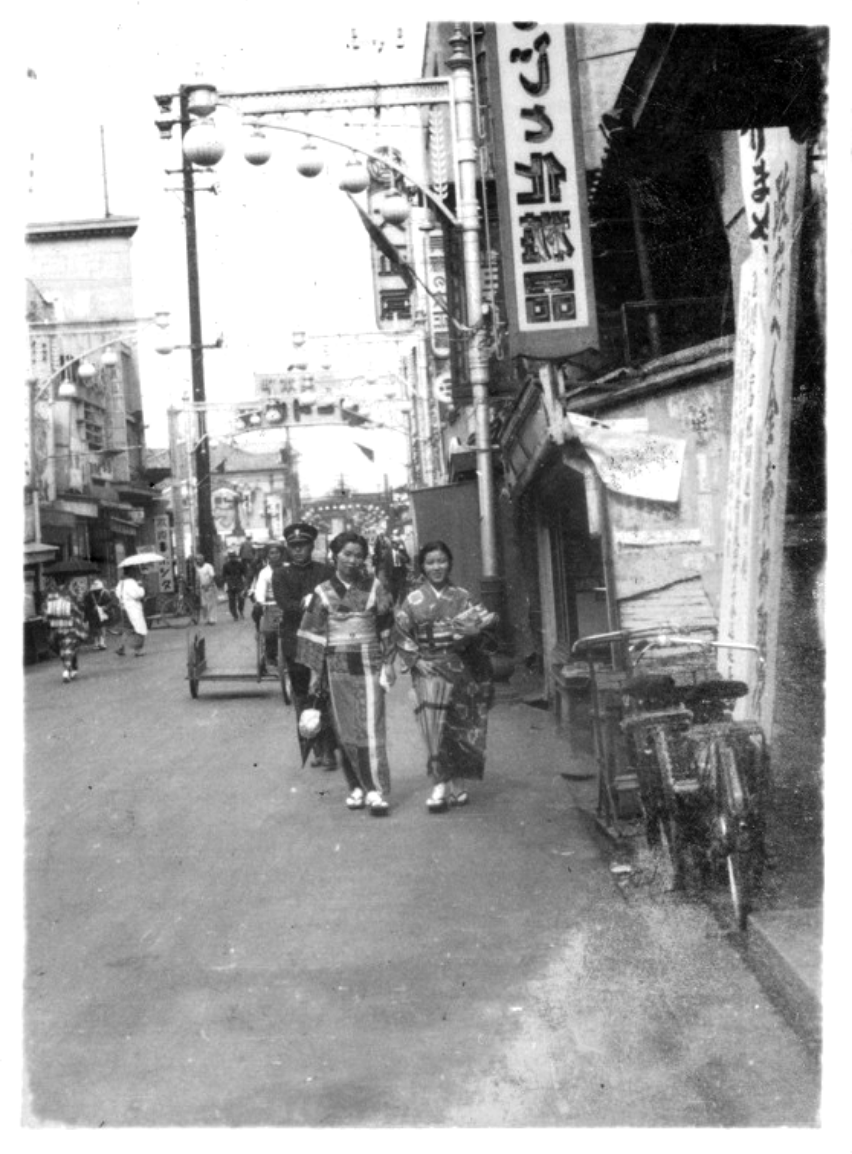
History
History of the Hiroshima Peace Memorial Park Rest House
We first start with the then modern three-story Taishoya Kimono Shop. During the war, it became the “Fuel Hall” and was destroyed by the atomic bomb. Seventy-five years after the bombing…because it’s an A-bombed building in Peace Memorial Park, it was renovated in July 2020 to look like the original Taishoya Kimono Shop. This renovated retro building, with its light-gray color, introduces the life of the city and its people as seen through the eyes of A-bomb survivors.
Taishoya Gofukuten

March 1929 Photograph at the time of completion (owned by SHIMIZUCORPORATION)
The store, with three floors of reinforced concrete and one basement floor, was built in Nakajima Honmachi in 1929 as one of Hiroshima’s leading kimono stores. The designer of the building was Kiyoshi Masuda, an architect who worked mainly in Osaka.
Fuel Hall

Color photograph of the area around the Fuel Hall (center) in November 1945,
with the Prefectural Industrial Promotion Hall (Atomic Bomb Dome) in the foreground
(Donated by H.J. Peterson, courtesy of Hiroshima Peace Memorial Museum)
In December 1943, the kimono store was closed due to the wartime textile control order. In June 1944, it was acquired by the Hiroshima Prefectural Fuel Distribution Control Association and became a “Fuel Hall”. At 8:15 a.m. on August 6, 1945, an atomic bomb exploded 600 meters above the hypocenter, wrecking the concrete roof and setting the interior ablaze. ※ Everyone in the building, except for one person in the basement, was subsequently killed.
Rest House

Rest house (before renewal)
※ The “Fuel Hall” continued to run after the war. In 1957, it was acquired by the City of Hiroshima.
It took on a new role as the Hiroshima City Eastern Reconstruction Office.
Since 1982, it has served as a rest house (tourist information and free rest area),
welcoming many students on school trips and tourists.
Survivor in the Basement
That day… employees of the Hiroshima Prefectural Fuel Distribution Control Association began work a little after 8:00 a.m.
Eizo Nomura, (野村英三) one of the 37 employees, had just gone into the basement to retrieve documents.
The building was at close range, approximately 170 meters from the hypocenter.
Immediately after the atomic bombing, Mr. Nomura was trapped in the basement by the impact.
After escaping, he saw the fire rising in the Industrial Promotion Hall and the Chamber of Commerce and Industry and fled to the riverbank.
He wrote about his experience of being drenched by heavy rain and shivering in the cold: “What a thing it is to be at the center of a great fire in the height of summer in August, and to approach the fire because of the cold.”
All of his colleagues who escaped with him died.
*The basement of the rest house is open to visitors today.
One can try to imagine “that day” by looking at the marks on the pillars and walls…
*Mr. Nomura’s account of his experience of the atomic bombing, written in 1950,
can be read on the website of the National Peace Memorial Hall for the Atomic Bomb Victims.

The late Eizo Nomura

Nakajima Honmachi
Although now a lush park, this area in the center of Hiroshima was home to several towns,
including Nakajima Honmachi, until they were destroyed by the atomic bomb.
In Nakajima Honmachi there were cosmetics stores, barbers, confectioners, inns, photography studios….
If you picture the rows of stores you can imagine the vibrant lifestyle of the people.

